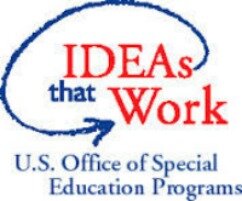With the increased focus on improving results for all students, we are often reminded of the importance of partnerships. These partnerships have become essential to our work in today’s complex educational environments where competing priorities, dwindling budgets, and fewer people to do the work must be balanced with higher levels of accountability that demand improved results for all students including students with disabilities. In order to increase academic proficiency, increase graduation rates, and ensure that students leave high school “college and career ready”, we must build partnerships at all levels, from the classroom to the state education agency, that capitalize on our knowledge, skills, and resources and foster a shared vision and commitment for improved results for all students.
The benefits of partnerships are not new to us. From the time we were young children, we have known that we could accomplish more with less effort and resources when we work together. In fact, we all have had many examples in our personal and professional lives of how we can work smarter and achieve more by working together. It was Helen Keller who once said that “Alone we can do so little; together we can do so much.” In education, we have so much to do in order to support all our students in leaving school with the knowledge and skills that they leave school college and career ready.
Georgia’s successful State Personnel Development Grant (SPDG) leverages strong district, regional, state, and national partnerships that capitalize upon partner knowledge, skills, and resources to realize the grant’s goal of improving outcomes for children and youth with disabilities. For example, in the SPDG’s nationally recognized GraduateFIRST initiative, the Georgia Department of Education, Division for Special Education Services and Supports, has partnered with the National Dropout Prevention Center for Students with Disabilities (NDPC-SD) to implement their data-driven intervention framework to successfully address barriers to graduation for students with disabilities in targeted schools. NDPC-SD staff have collaborated with the SPDG team in designing initiative activities, providing professional learning, and assist in designing initiative evaluation measures. At the state and regional levels, the GaDOE has partnered with the staff from the Georgia Learning Resources System, a regional network of 17 centers providing professional learning in special education, to hire collaboration coaches who are working in low performing schools in coordination with personnel from the Office of School Improvement to support the implementation of evidence-based strategies for reducing dropout and increasing graduation rate of students with disabilities. At the district and school levels, general education and special education teachers and administrators are then partnering together to implement the strategies. Project outcome data has shown reductions in dropout rate and increases in graduation rate in schools participating in the project.
If you ask any member of the SPDG team, they will be able to tell you first-hand about the importance of these partnerships. We would like to hear more about how you are leveraging partnerships in your school and district to improve results for all students including students with disabilities. Please take a moment to respond to this blog with examples of partnerships in which you have been engaged where working together resulted in improved outcomes for your students.



